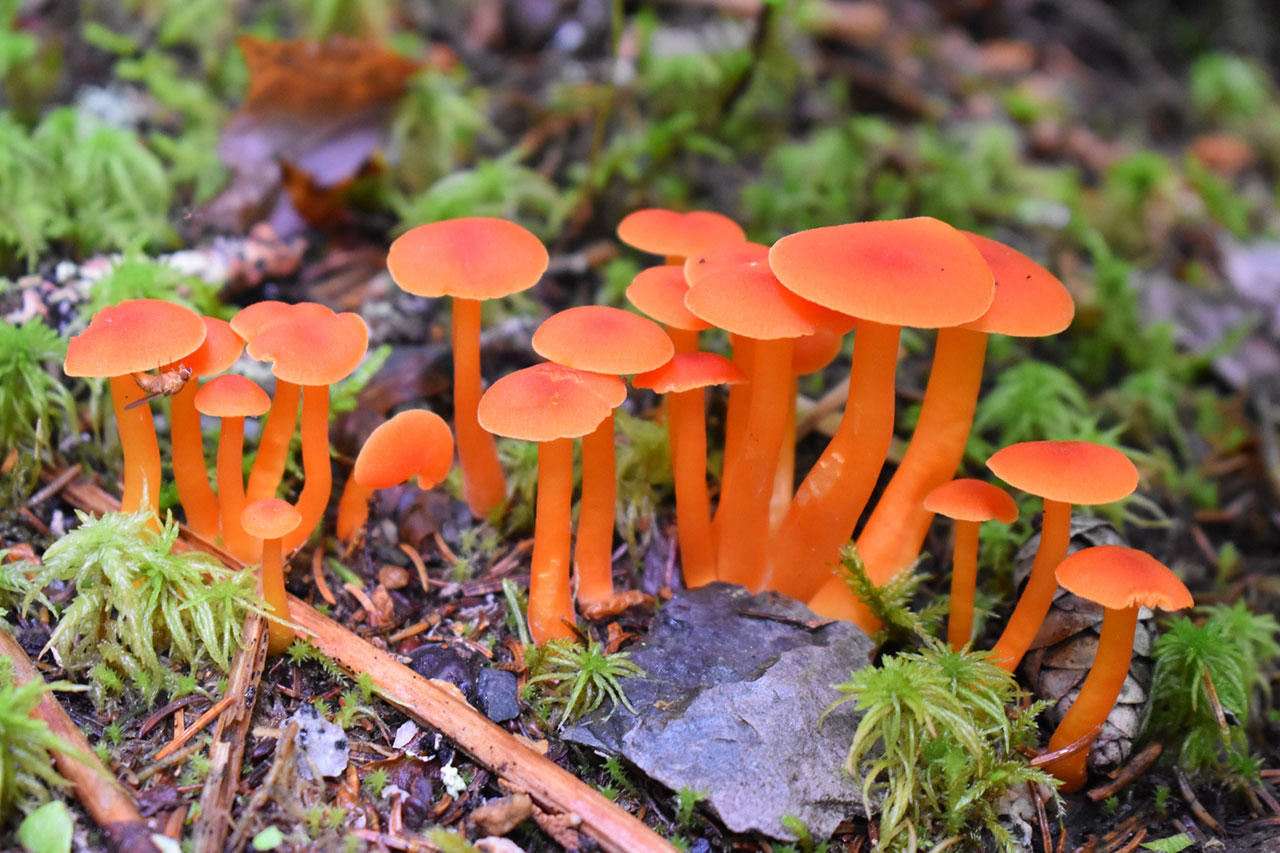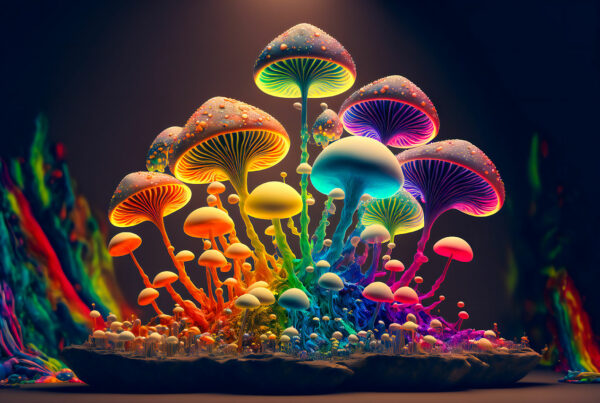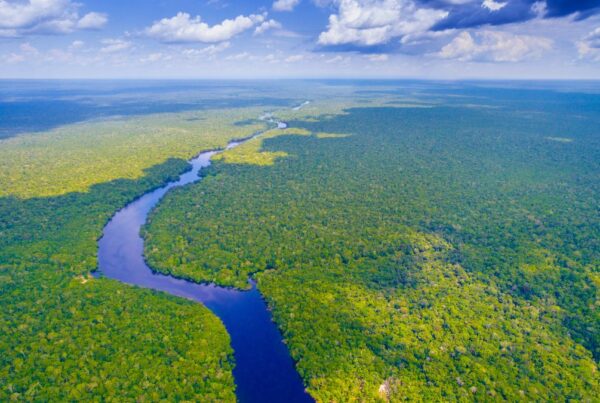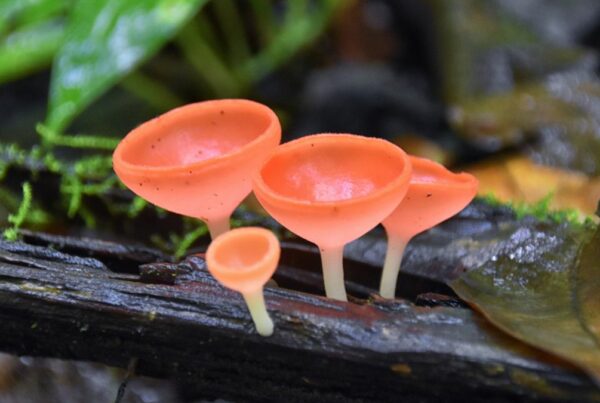The lush rainforests and the extraordinary biodiversity of the Earth’s tropical regions makes them ideal for discovering a wide range of mushrooms.
There are estimated to be over a million species of mushrooms growing in the tropics and less than 5% of these species have been properly identified and cataloged by mycologists.
In tropical countries, you will find a wide range of different mushrooms growing in the different forest ecosystems between the humid coastal jungles and the cooler cloud forests at higher elevations.
Some of my favorite places to forage for tropical mushroom species are:
1. The mountain highlands in the states of Oaxaca and Chiapas in Mexico.
2. The lowland jungles and high elevation clouds forests of Costa Rica, Colombia and Panama.
3. The lowland regions of the Amazon rainforest in Colombia, Ecuador and Peru.
Due to high rainfall through the year in the tropical regions, you can find tropical mushrooms at most times of the year.
However, you will find a lot more during the full tropical wet season that generally stretches from May to November with the highest rainfall usually in October/November yielding the most varieties of mushrooms.
The best time to foraging is after a big thunderstorm because mushrooms have an affinity for the combination of lightning and humidity.
Mushrooms are actually the fruiting bodies of an underground “ecological Internet” known as mycelium that connects the trees and plants in the forest together.
This makes the study of mushrooms known as mycology a fascinating window into how forest ecosystems work.
Want to learn more about tropical fungi? Get my digital field guides to tropical rainforest flora, fauna and fungi.
The Most Awe-Inspiring Tropical Mushrooms:
Here are 10 of the most beautiful and interesting tropical mushrooms found in the rainforests of the tropics.
1. Red Stinkhorn

Scientific name: Laternea Pusilla
An odd-looking species of stinkhorn fungi in the Phallaceae family found in Central and South America. Like other stinkhorns, it produces a spore-laden, foul smelling slime that attracts insects.
2. Bridal Veil Stinkhorn

Scientific name: Phallus Indusiatus
Commonly called the bridal veil stinkhorn, bamboo fungus or the veiled lady. This fungus is in the family Phallaceae, also known as the mysterious stinkhorns and it is found across the world’s tropical regions.
3. Scarlet Elf Cap

Scientific name: Scutellinia scutellata
Also known as the common eyelash fungi, this is a small fungus made of small red cups with distinct dark hairs or “eyelashes” that make it easy to identify.
4. Collared Earthstar

Scientific name: Geastrum triplex
Also commonly called the saucered earthstar, or the triple earthstar. This mushroom trinity grows in the leaf litter throughout tropical rainforests and has a history of use in traditional medicine.
5. Cordyceps Militaris

Scientific name: Cordyceps militaris
Kike all cordyceps mushrooms, this is a zombie fungus that alters the behavior of the ants (and other insects) in such a way as to propagate itself more effectively. It kills the ant and then grows its fruiting bodies from the ant’s head to release its spores.
6. Anemone Stinkhorn Fungus

Scientific name: Aseroe rubra
Also known as the starfish fungus, this mushroom is recognizable for its foul odour. Stinkhorns fungus are some of the oddest looking mushrooms in the kingdom of tropical fungi.
7. Psilocybe Cubensis

Scientific name: Psilocybe cubensis
This is the most common species of psychedelic mushroom found in the tropics. The principal psychoactive compound is psilocybin, which expands consciousness and can induce states of mystical unity. These magic mushrooms are usually found in tropical regions growing on manure.
8. Indigo Milk Cap

Scientific name: Lactarius indigo
This eye-catching indigo-colored mushroom looks like a blue portobello mushroom and is a highly sought after edible mushroom that can be found in the forest in the tropics as well as northern regions.
9. Marasmius Tageticolor

Scientific name: Marasmius tageticolor
Marasmius tageticolor is a species of agaric fungus with fruiting bodies that have striped red and white caps. It is found in Mexico, Central America, and South America, where it commonly grows on twigs.
10. Luminescent Panellus

Scientific name: Panellus stipticus
Last but not least, how about a tropical mushroom that glows in the dark? Commonly known as the bitter oyster, the astringent panus, or the luminescent panellus. It takes hold of branches and showcases a dazzling bioluminescence as soon as the sun sets.
I hope you enjoyed these eye-catching tropical mushrooms. Have a look next time you’re in the tropical jungle and you may just see one of them.
Download Our Guide To 5 Easy To Identify Medicinal Mushrooms
Want to start identifying the mushrooms you discover in the forest?
Get our free guide to identifying medicinal mushrooms and how to catalog them using your smartphone so you can develop your pattern recognition skills.
- Chephren Lake And The Mistaya River Valley - July 1, 2024
- Mindfulness And The 4 Steps of Attention Restoration Theory - June 29, 2024
- 3 Pillars Of An Ecotourism Marketing Strategy For Selling Travel Experiences - June 29, 2024




Checking out your beautiful website and plan to watch several the recommended documentaries.
I live in Panama. I have seen Bridal Veil Stinkhorn and the Marasmius Tageticolor also. Is the Collared Earthstar quite small? Perhaps I saw it also, thinking it was a weird seed sprouting.
It’s rainy season and the number, variety, and beauty of fungi are amazing. Looking forward to learning more from your website.
Are there bioluminescent mushrooms here?
Hey Kath,
I’m happy that I inspired you to learn more about tropical fungi! Panama has such incredible jungle for finding mushrooms.
The Collared Earthstar is quite small, they are common in Panama. I’ve seen bioluminescent Oyster Mushrooms in Panama, they’re called Panellus stipticus.